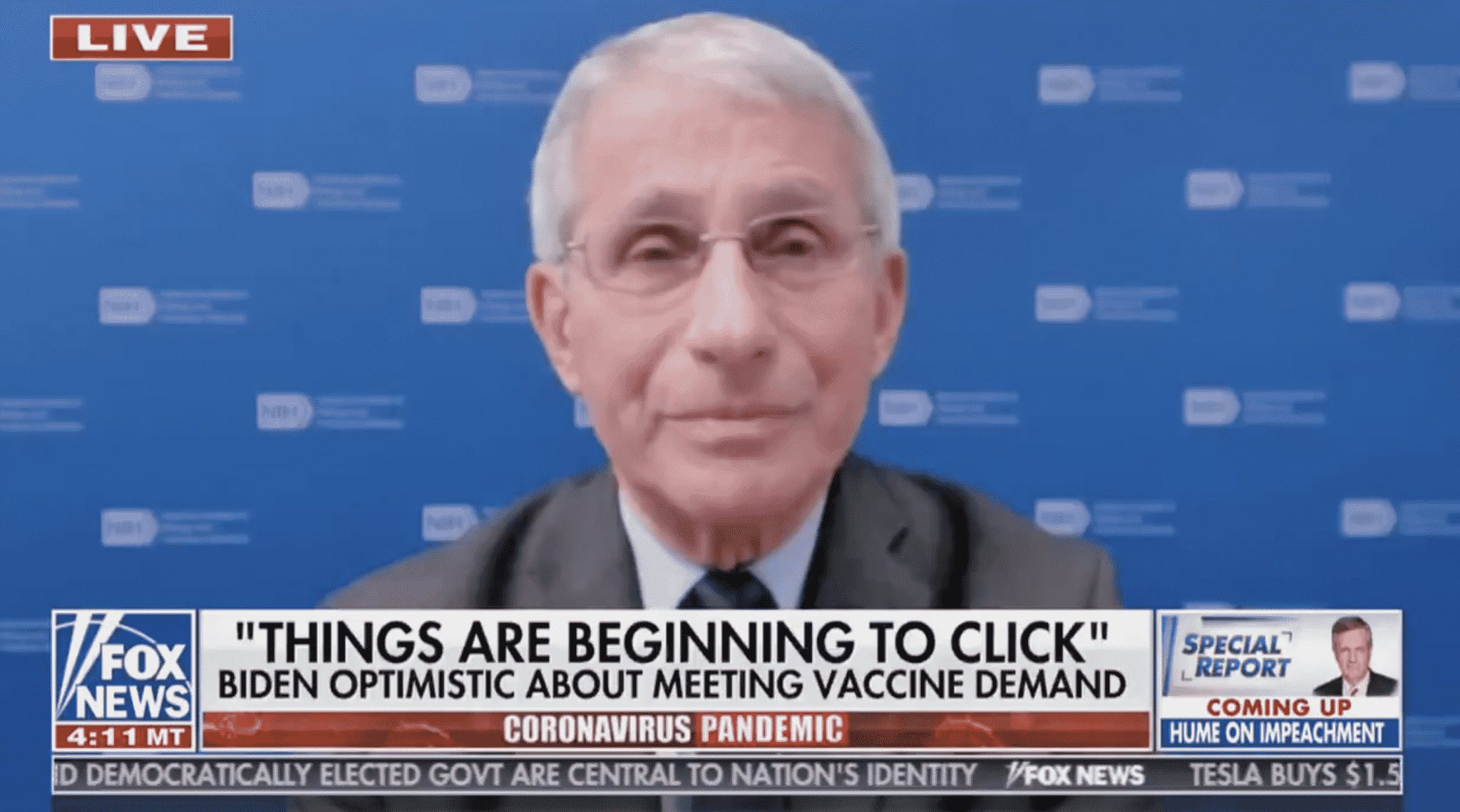Dr. Anthony Fauci is predicting when Americans can get rid of their masks.
Fox News’ Bret Baier asked Fauci during an interview on Monday night if there will ever be a time where there are no masks and when that would be.
“That will really be dependent upon how we get the level of the virus in the community down,” Fauci said.
He explained it is crucial the United States get 70 to 85% of the population vaccinated and reach a “degree” of herd immunity, “which really is an umbrella or a veil of protection… where the level of virus is so low it’s not a threat at all.”
Fauci added, “Then at that point, you can start thinking in terms of not having to have a uniform wearing of masks.”
Watch his interview below:
Dr. Fauci now says the federal government can't even think about loosening guidance on masks until after the virus is "not a threat at all" via roughly 80% of the population being inoculated against COVID-19. pic.twitter.com/VUeOAXvVYn
— Washington Examiner (@dcexaminer) February 9, 2021
He noted the nation has not reached that point.
“When do I think that would occur? It’s very difficult to predict, Bret, but if everything falls into the right place and we get this under control, it is conceivable that you might be able to pull back a bit on some of the public health measures as we get into the late fall of this year. But there’s no guarantee of that,” Fauci explained.
During a CNN Global Town Hall last month, Fauci discussed why it is important to still wear a mask even after getting vaccinated, as IJR previously reported.
“The reason is very clear: that the primary endpoint of the vaccine trial was clinically apparent infection,” Fauci said.
He continued, “So you could conceivably get infected, get no symptoms, and still have virus in your nasal fairings, which means you would have to wear a mask to prevent you from infecting someone else.”
On Monday, Fauci said the best defense against variants of COVID-19 is to vaccinate Americans as quickly as possible, as IJR reported.
According to the leading infectious disease expert, the best approach “would be to continue with getting as many people on their first dose as possible but also making sure that people on time get their second dose.”
























